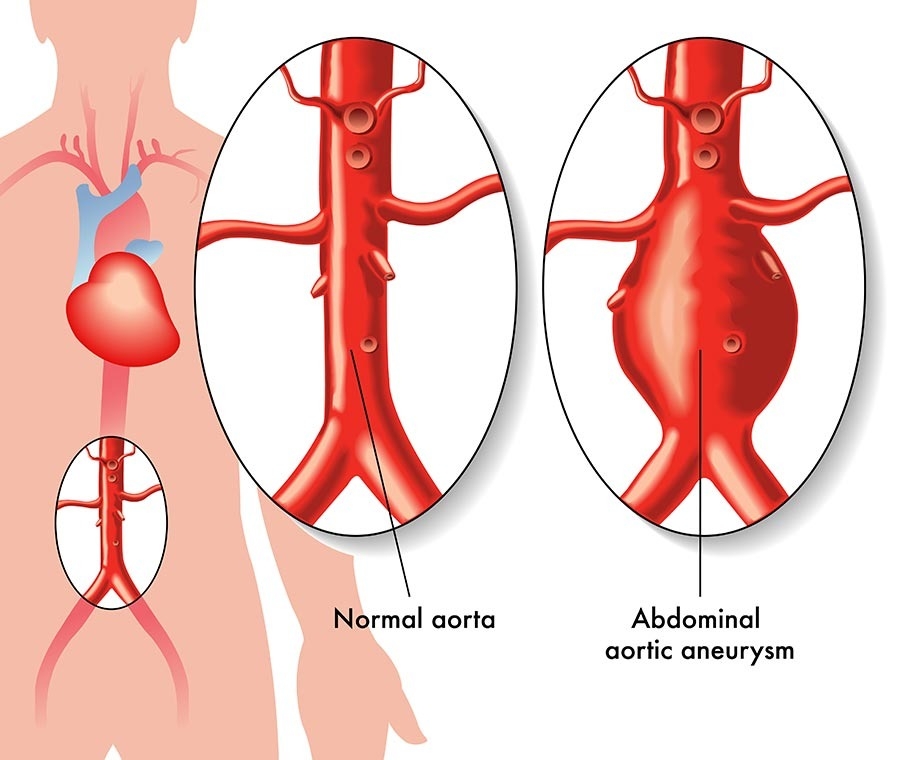Abdominal Aortic Aneurysms (AAA)

An aneurysm is a balloon-like dilation or bulge that occurs in the wall of weakened blood vessels. While they can occur in many arteries in the body, they are most common in the abdominal aorta, a vital blood vessel that supplies blood to your legs. AAA’s that continue to bulge have an increased chance of bursting, leading to an internal hemorrhage and death.
- Every year, 200,000 people in the U.S. are diagnosed with an abdominal aortic aneurysm (AAA). (Society for Vascular Surgery)
- A ruptured AAA is the 15th leading cause of death in the country, and the 10th leading cause of death in men older than 55. (Society for Vascular Surgery)
Signs and Symptoms
- Physical exam may reveal to your physician a pronounced pulsation or pulsatile mass in the middle of the upper abdomen
- Most people do not have symptoms before rupture
- Majority are found incidentally on x-rays (such as an ultrasound, CT scan, or back x-ray) performed for unrelated reasons.
Call To Schedule An Appointment
303-539-0736
Signs and Symptoms
Risk Factors
- Current/former cigarette smokers
- More common in men than women
- Age over 60 years
- Heart disease
- Hypertension/high blood pressure
- Infections
- Congenital abnormalities
- Peripheral arterial disease (other arterial blockages)
- Family history. If first-degree relative (mother, father, brother, sister) has a AAA, you have a 12%-25% chance of developing one.
Detection

An ultrasound scan of the abdomen is very effective at identifying the presence of an AAA and at measuring its maximal size. Medicare covers AAA screening in males older than 65 who have ever smoked more than 100 cigarettes.
Treatment Options
- Endovascular Repair
- This minimally invasive surgery involves an incision in each of the two groins so a device (a stent graft or a cylindrical metallic frame covered with a fabric), guided by x-ray, can be inserted into the aortic aneurysm. Once inserted in the proper position, the stent graft replaces the abnormally dilated section of aorta from within. Endovascular repair involves less operative stress on the body without a painful abdominal incision, less blood loss, a lower operative mortality, reduced length of hospital stay and a quicker recovery compared to open surgery.
- Open Surgical Repair
- This approach involves making an incision in the abdomen to expose the aortic aneurysm. Clamps are applied to the arteries above and below the aneurysm while the section of the abnormally enlarged artery is replaced by a synthetic tube or graft. Clamps are removed and blood flow is restored. This surgery boasts durable success, however it is a major surgery. Patients will spend 7-10 days in the hospital and typically return to their normal self in 2 to 3 months.
Call To Schedule An Appointment
303-539-0736